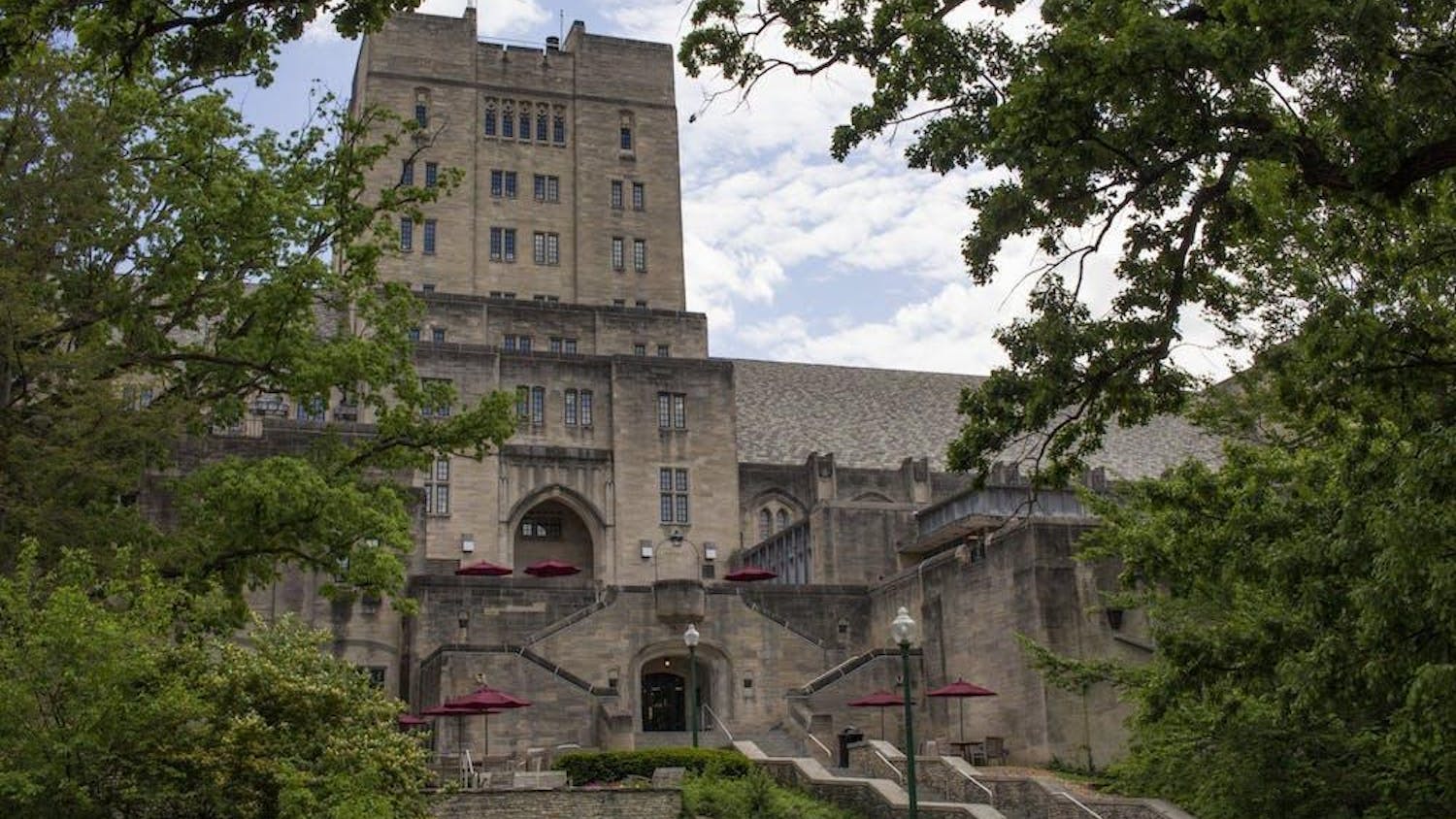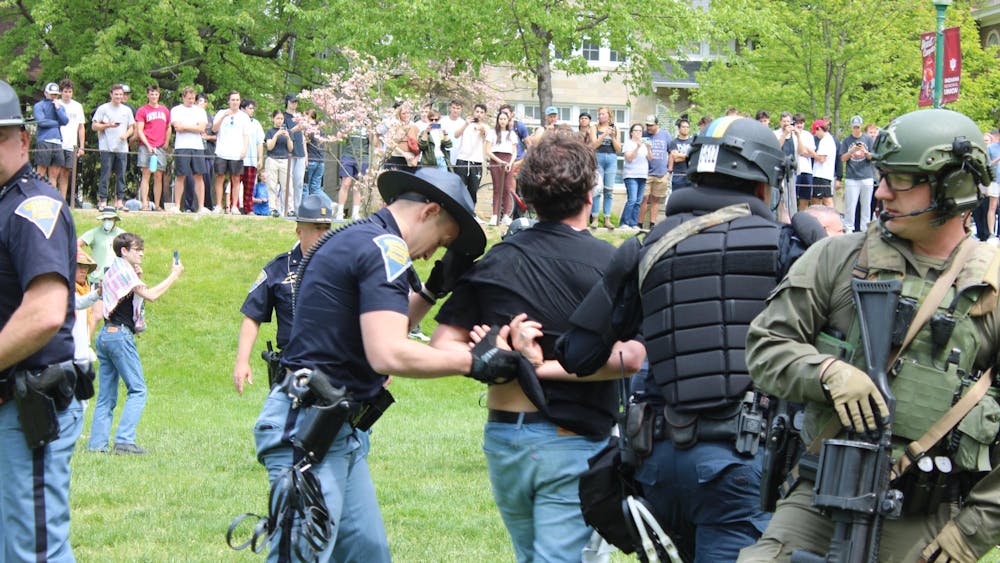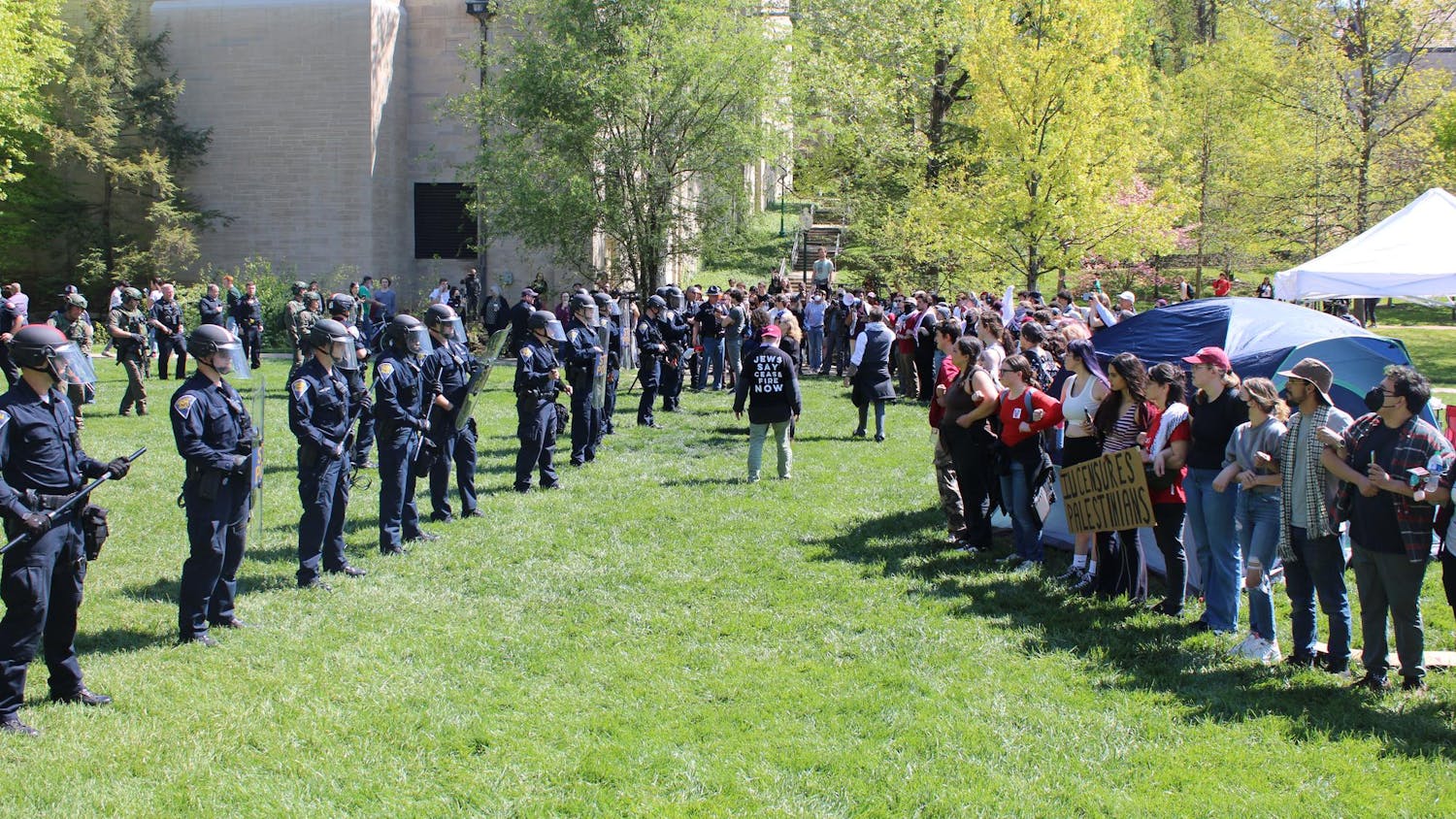When terrorists attacked the United States on Sept. 11, professors and students in many IU classes got the chance to discuss what had happened and the feelings they were experiencing.\nLesson plans went on as usual in IU's Japanese classes. Not because everyone didn't want to talk about what happened. But because they couldn't.\n"The grammar we use in class is very basic," Joanne Quimby, a graduate student and assistant instructor for Japanese classes said. "We talk about how the weather is."\nFor the last week, students and professors in these classes expressed their emotions for those who lost their lives in another way: with their hands.\nJapanese language students and East Asian Languages and Culture faculty and staff folded more than 1,000 origami peace cranes to help with an effort to send 7,000 cranes to the Red Cross, with about one crane to represent each person killed during the terrorist attacks.\n"This was something we could do," Quimby said of the project. "We could share something we all knew we were feeling."\nIU's part in this project began when Kazumi Hatasa, a professor of Japanese at Purdue University, contacted Yasuko Watts, an IU professor of Japanese, asking for help with making and sending the cranes. The idea for the project came from Yasumi Kuriya, a professor of Japanese at the University of Iowa.\nWatts made up an instruction sheet on how to make a crane and recruited a member of the department to track down origami paper. Watts cut the paper into small squares and had her assistant instructors distribute the paper during Japanese classes. Students folded cranes at the end of classes and were encouraged to take paper home to make more.\nAfter less than a week, the result is 10 strings of 100 tiny cranes each. More sit inside a box at the department office. There are cranes in all shades of purple, blue, green, yellow, orange and red. Others feature thin yellow and purple strips or red and white flowers. Some are folded neatly and some feature haphazard or crooked creases.\n"Some are beautiful and some are not, but they were folded thinking of the people who lost their lives and their families," Watts said. \nThe idea of folding cranes for peace originated in Japan after World War II, when the United States dropped atomic bombs on the Japanese cities of Hiroshima and Nagasaki. Twelve-year old Sadako Sasaki, who was two at the time of the bombing, was diagnosed with leukemia as a result of the radiation she was exposed to when the atomic bomb was dropped. \nJapanese legend says anyone who folds 1,000 paper cranes is granted a wish; Sadako attempted to fold cranes so she could wish to get well. Although Sadako eventually died of her disease, she did fold her 1,000 cranes and inspired millions of people do to the same. \nFreshman Jeni Schaibley, who helped fold some of the cranes, remembers reading a book about Sadako in elementary school. Schaibley said although the legend might not be grounded in reality, its sentiment is still important.\n"It's funny that this was done in such a patriotic spirit yet the concept came from another culture," she said. "I think that's symbolic of America."\nSchaibley and freshman Elisa Leverett, who are both taking first-year Japanese, were two students who took home extra paper for crane-making. \n"Sending the cranes is like sending flowers but it's more meaningful because we put effort into making these beautiful little things," Schaibley said.\nLeverett hopes the folded cranes will send a message to those affected by the terrorist attacks.\n"The cranes show that our thoughts and prayers are with them," Leverett said.\nMany students got very involved with making cranes. Watts said one student, who wanted to remain anonymous, sent a friend to her office with a bag of about 200 cranes.\n"I don't know who he or she is but I'm so glad this person did it," she said.\nJanet Donely, administrative assistant for the East Asian Languages and Cultures Department, spent all of last weekend folding about 100 cranes. \n"I got the directions Friday and spent all weekend trying to follow them," she said.\nThis week people often came by the office where Donely works asking for origami paper to make cranes for the project. Making the cranes and encountering the many others who volunteered to do so as well was touching to Donely.\n"It was a reminder how much need there is in the world and how much sorrow," she said. "There's need everywhere and we always have to step up and do our part"
Cranes for Peace
Get stories like this in your inbox
Subscribe





